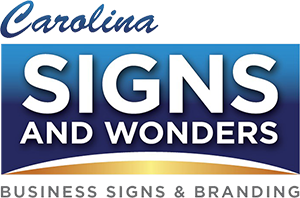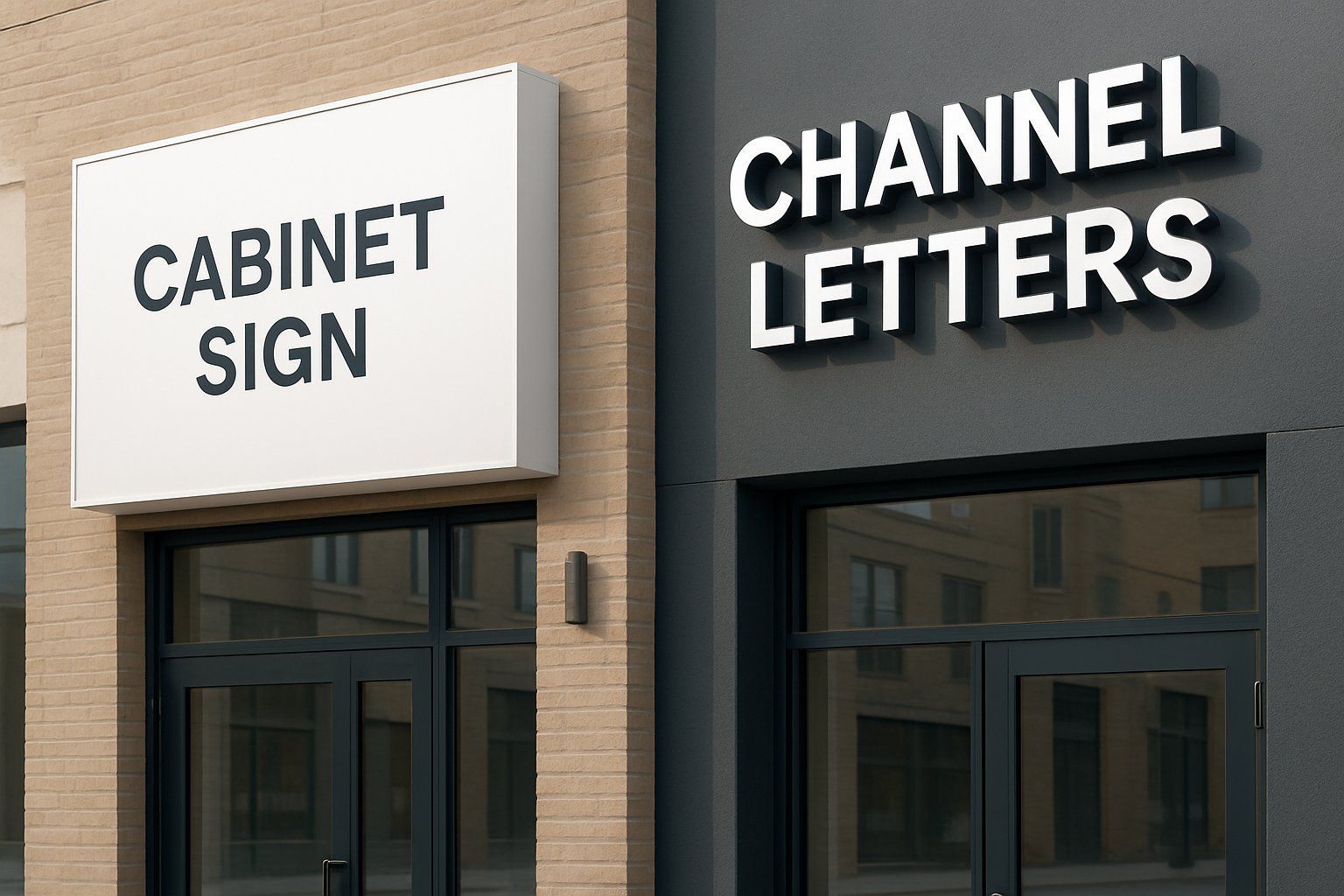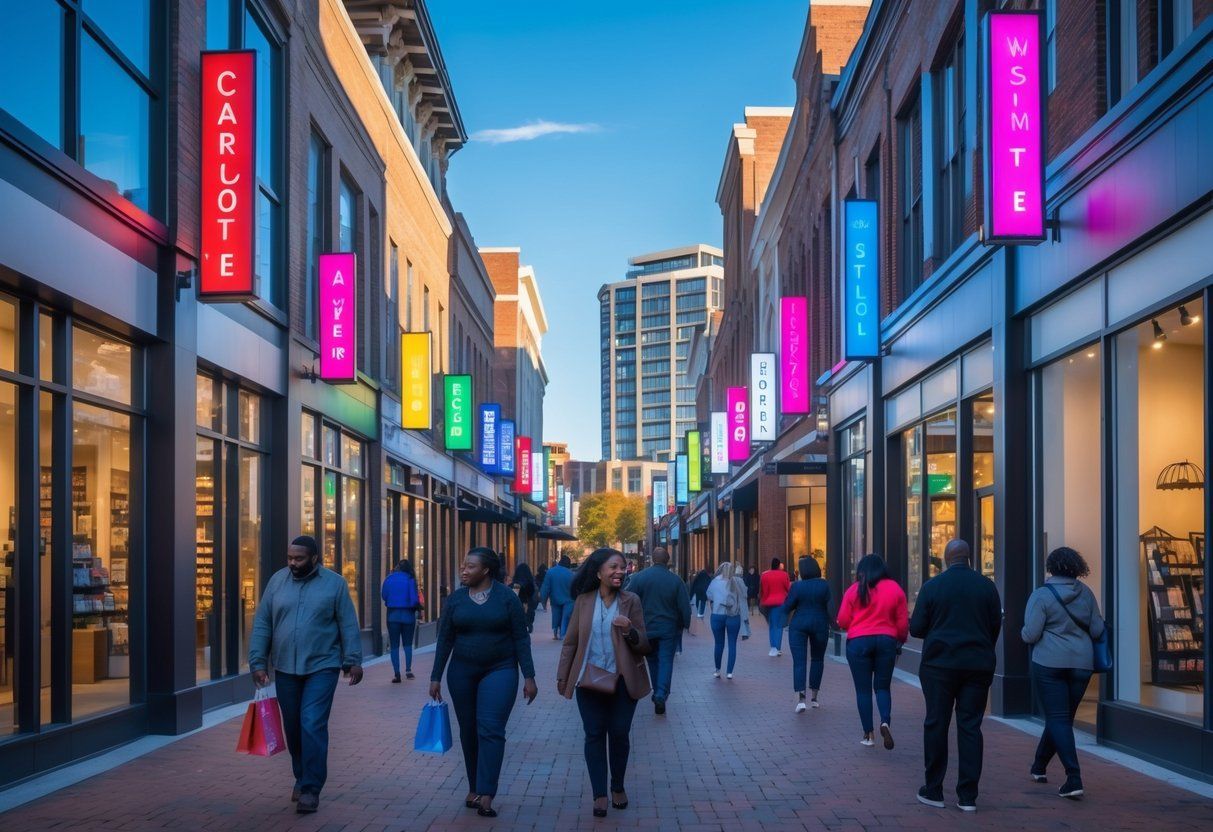Types of Business Signs for Buildings: A Comprehensive Guide to Effective Exterior Signage
Businesses use different types of signs on their buildings to attract customers and communicate their brand. These signs include wall-mounted signs, window graphics, and projecting signs that stick out from the building.
Each type of sign serves a specific purpose depending on location, visibility, and business needs.
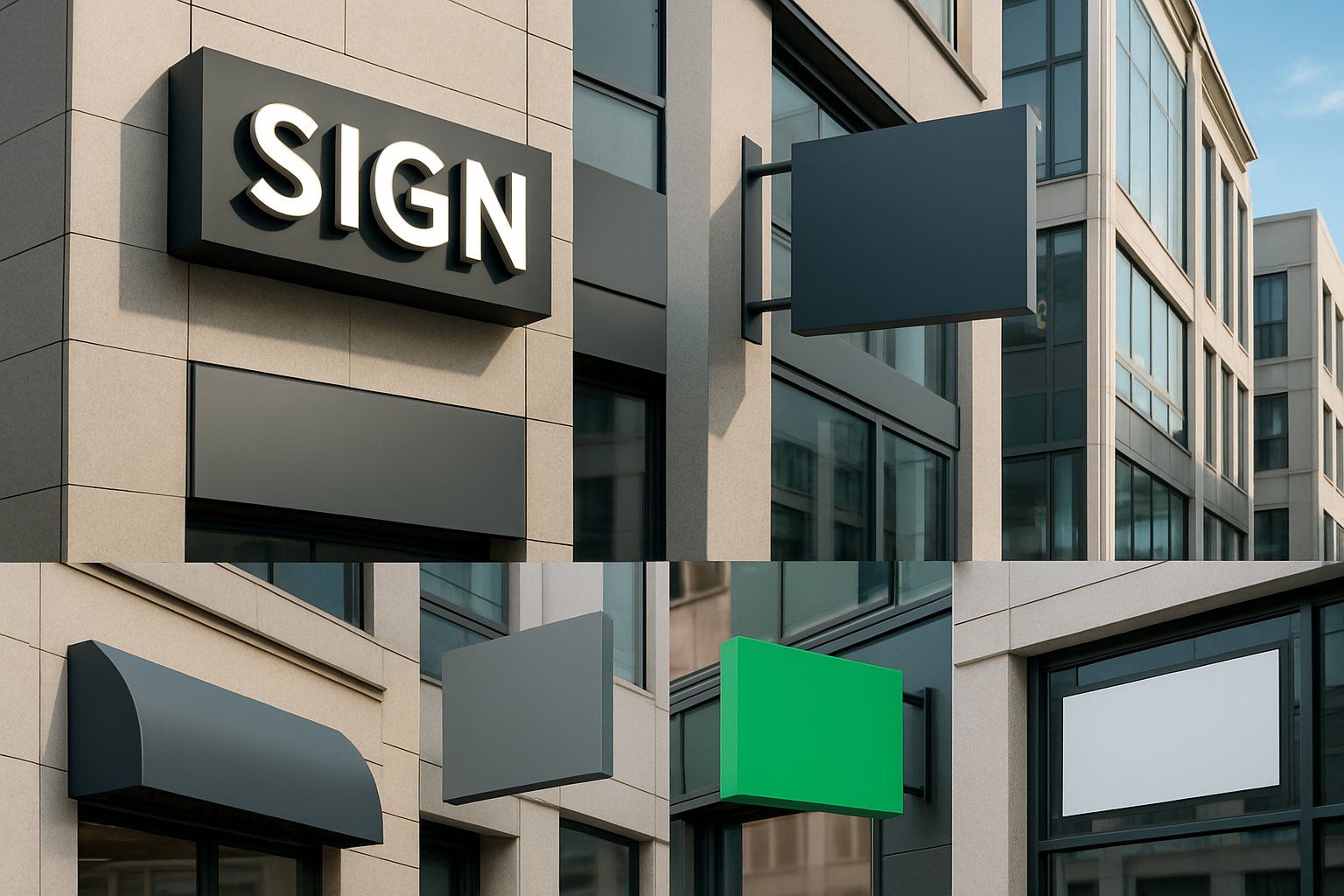
Some signs, like monument or pole signs, stand away from the building to catch attention from a distance. Others, such as dimensional letters, add a three-dimensional look directly on the exterior walls.
Interior signs also help guide visitors and create a professional atmosphere inside the building.
Choosing the right sign involves considering materials, design, and local rules. Knowing these options helps businesses make smart decisions to boost visibility and customer engagement.
Key Takeways
- Business signs vary by type and purpose for exterior and interior use.
- Signs include wall, window, projecting, and freestanding options.
- Materials and rules affect sign choice and placement.
Overview of Business Signs for Buildings
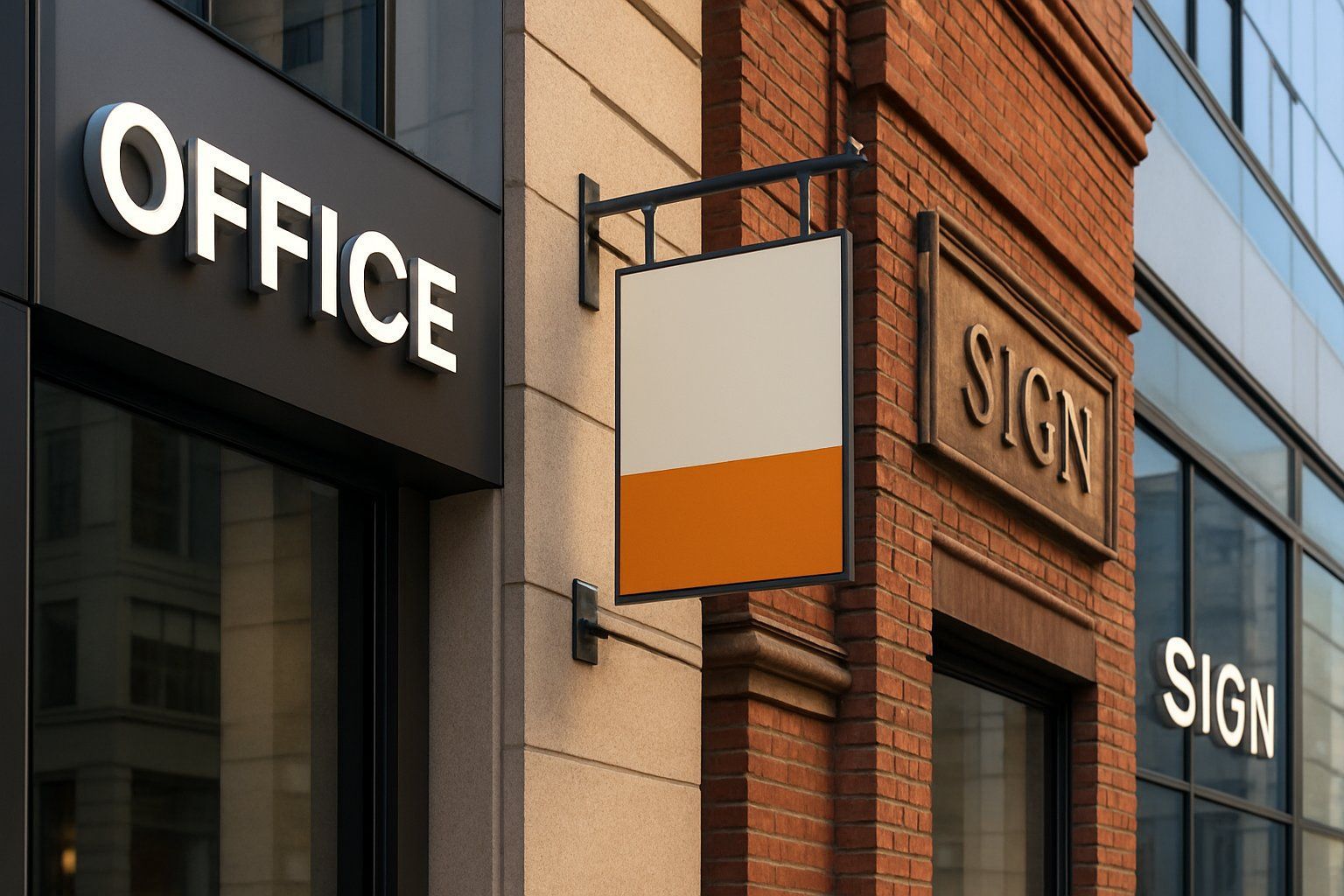
Business signs serve as visual tools that communicate a company’s identity and purpose. They help customers find locations, offer information, and create impressions.
Effective signs balance design, function, and branding to support the business’s goals.
Defining Business Signs
Business signs are physical displays placed on or near buildings to represent the company. They include exterior signage like wall signs, awnings, and monument signs, as well as interior signage such as directory boards or promotional posters.
Each type serves a distinct purpose: exterior signs attract attention and direct customers, while interior signs guide visitors or promote products.
Business signs use text, graphics, and logos to clearly identify a business and its services.
Significance of Signage for Businesses
Signage plays a critical role in branding and customer engagement. It acts as the first point of contact between the business and potential customers, setting expectations for quality and professionalism.
Well-designed signs improve visibility, encourage foot traffic, and build trust. Poor or missing signs often confuse customers and reduce chances of sales.
In competitive areas, clear signage can help a business stand out and grow.
Key Components of Effective Signs
An effective business sign combines several important features:
- Visibility: Easy to see from a distance and in various lighting.
- Legibility: Clear fonts and adequate size so text reads quickly.
- Relevance: Uses colors, fonts, and images that match the brand.
- Durability: Made of materials suited for weather and wear.
- Placement: Positioned for maximum exposure and accessibility.
Using these components ensures the sign supports the business’s identity and communicates necessary information fast.
Exterior Building Signs
Exterior building signs are designed to attract attention from a distance and create a strong business presence. They vary in size, style, and lighting to fit different types of properties such as retail centers and shopping malls.
These signs include both traditional and modern designs, often incorporating illumination for visibility day and night.
Channel Letters
Channel letters are individual, three-dimensional letters commonly used on storefronts. They are usually made from metal or plastic and can be illuminated with LED or neon lighting.
This lighting makes them easy to read in low light or at night. These signs offer flexibility in font, color, and size, allowing businesses to customize their exterior branding.
Channel letters are often mounted directly onto building facades or can be attached to a raceway for easier installation.
Monument Signs
Monument signs stand on the ground and sit at eye level, usually near walkways or entrances. They are solid, heavy structures made of materials like brick, stone, or concrete.
Monument signs help identify retail centers, office parks, or smaller businesses with clear, visible branding. They are durable and can include lighting to enhance nighttime visibility.
Because they are low to the ground, monument signs work well for outdoor spaces with foot traffic or where pole signs are not allowed.
Pylon Signs
Pylon signs, sometimes called pole signs, are tall, freestanding structures that display a business name or logo. They are highly visible from the road, making them ideal for shopping malls and business complexes near busy highways.
These signs often have illuminated panels and can include multiple tenant names. Pylon signs help guide drivers to businesses before they reach the building, improving overall visibility and wayfinding.
Wall and Window Signage
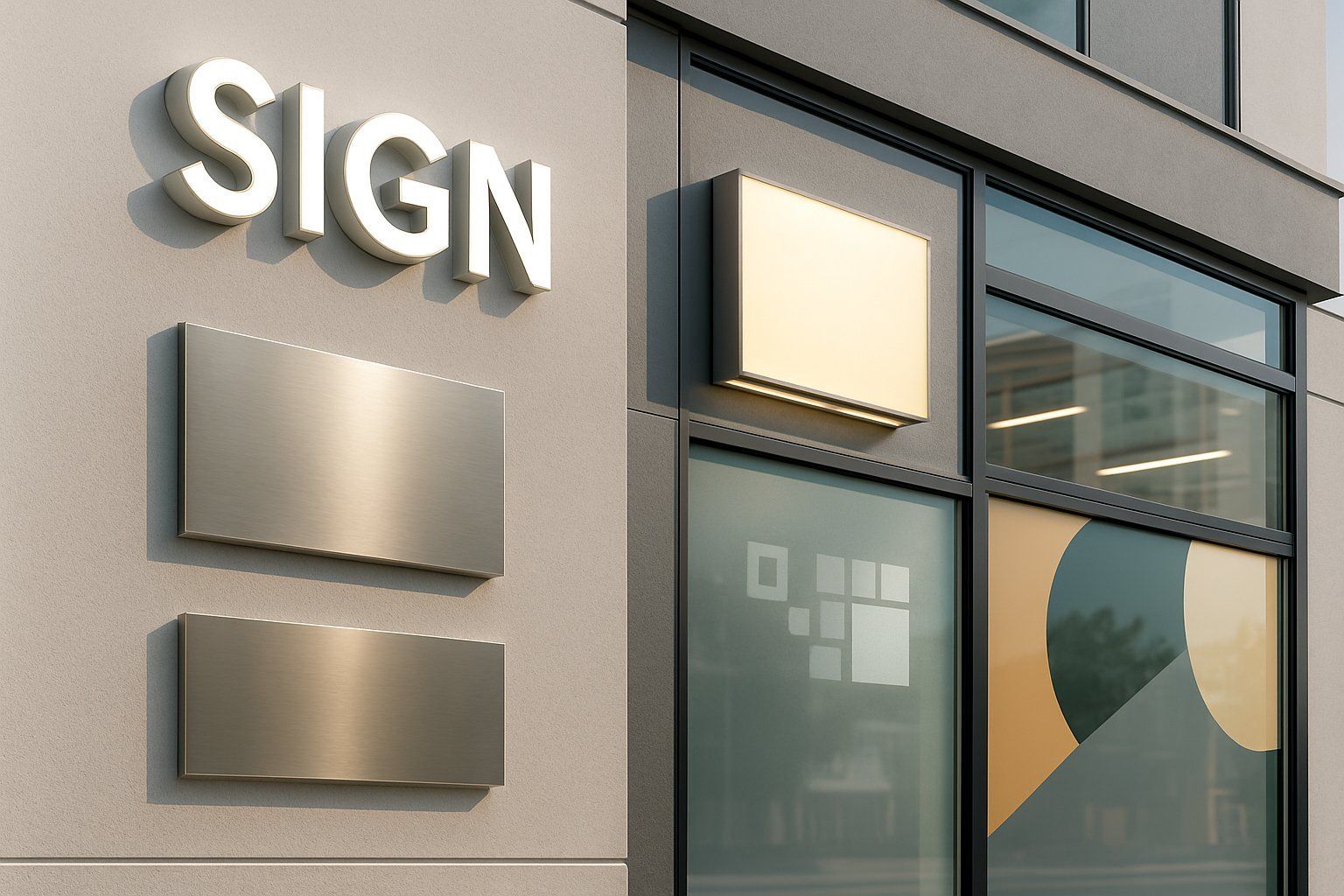
Signs on walls and windows play a key role in showing a business’s name and brand. They must be clear and match the style of the company.
Using the right materials and designs helps attract customers and improve visibility.
Wall Signs
Wall signs are attached directly to a building’s exterior. They often display the business name or logo in bold, clear fonts.
These signs can be made from metal, acrylic, or wood, depending on the look a company wants. Wall signs must be easy to read from a distance.
Lighting can be added for better visibility at night. They support branding by reinforcing the company’s colors and style on the building’s surface.
Window Graphics
Window graphics cover glass surfaces with images, text, or patterns. This signage type can advertise promotions or highlight business hours.
They also provide some privacy while still letting light in. Graphics are usually printed on vinyl sheets, which stick to the inside or outside of windows.
They can be full-color or simple cutouts. Businesses use window graphics to grab attention without needing extra space outside.
Vinyl Lettering
Vinyl lettering uses individual letters or shapes cut from vinyl sheets. These letters stick directly to walls or windows as a clean and simple way to show a business name or message.
This type of signage is cost-effective and easy to update. It works well for both small details and large text.
Vinyl lettering emphasizes branding with sharp edges and consistent fonts that match other signs.
Blade and Projecting Signs
These types of signs extend from a building, making them easy to see for people walking nearby. They help improve visibility for retail stores and other businesses, especially in busy areas with heavy foot traffic.
Both types catch attention from different angles, helping customers find the location more easily.
Blade Signs
Blade signs attach perpendicular to a building’s facade. They usually hang over sidewalks or entrances.
This placement makes them visible to pedestrians walking along the street. Blade signs are often double-sided, allowing people on both sides of the street to see the business name or logo.
They can be made from materials like metal, wood, or acrylic, depending on the look the business wants. These signs work well for small shops and retail stores in busy areas.
They help increase foot traffic by catching the eye at closer distances where larger wall signs may be missed.
Projecting Signs
Projecting signs also extend out from a building but often hang from a bracket or arm. They tend to be smaller than blade signs but still stand out from the wall.
They are useful for businesses located on narrow streets or walkways where visibility is limited. Projecting signs can include lighting to remain visible at night.
These signs improve wayfinding for customers and encourage impulse visits. They are a popular choice for businesses that rely on foot traffic, such as cafes, boutiques, and service providers.
Monument, Pylon, and Pole Signs
These types of signs are commonly used in retail centers and by property management companies to display business names and information. They vary in height, design, and visibility but all serve the purpose of attracting attention from a distance.
Monument Signs
Monument signs are low-profile structures placed at ground level. They usually have a solid base made of brick, stone, or concrete.
This type of sign is often found at entrances to retail centers or office parks. Monument signs are designed for close-up visibility.
They often include lighting for nighttime use. These signs are stable and durable, making them popular for property management to mark multiple businesses in one place.
Pylon Signs
Pylon signs stand taller than monument signs and are supported by one or two large poles. They are often used on busy roads to catch the eyes of drivers from far away.
These signs typically display multiple business names in retail centers. Pylon signs must meet local zoning rules about height and size.
They offer strong visibility, which helps businesses attract customers from main streets. Property managers use pylon signs to list tenants clearly.
Pole Signs
Pole signs are mounted high on a single pole to maximize visibility at large distances. They are common near highways or large commercial areas where attracting traffic is crucial.
These signs can be simple or illuminated. Because of their height, pole signs are effective for brands that want to stand out.
They help guide customers to a location that might otherwise be hard to see. Property management companies often use them to advertise retail centers.
Dimensional and Channel Letter Signs
These signs add depth and visibility to building exteriors. They help businesses stand out by creating a strong presence and reinforcing brand identity with clear, bold lettering.
Dimensional Letters
Dimensional letters are three-dimensional shapes mounted directly on a building’s surface. They can be made from materials like metal, plastic, or wood.
These letters stand out because they cast shadows and have physical depth. They improve visibility by creating a more dynamic look than flat signs.
Businesses use them to showcase their name or logo clearly, especially in daylight. Dimensional letters can be painted or coated for durability and style.
They are easy to customize to match a company’s brand colors and fonts. This makes them a popular choice for storefronts and offices aiming for a professional appearance.
Channel Letter Signs
Channel letter signs are a type of dimensional sign that includes internal lighting, usually LEDs. Each letter is hollow and lit from the inside, which helps the sign stay visible at night or in low light.
They create a strong visual impact by glowing, which increases a business’s visibility after dark. Channel letters are often made of aluminum or plastic and can be designed in different styles like front-lit, back-lit, or halo-lit.
These signs are popular for retail stores, restaurants, and office buildings because they combine great visibility with a polished, modern look.
They also reinforce brand identity with vibrant colors and clarity both day and night.
Awnings, Canopies, and Banners
These types of signs each provide shade and visibility but differ in design, material, and installation. They can protect entrances, display business names, or promote events using fabric or other durable materials.
Awning Signs
Awning signs use fabric stretched over a frame, often made of metal or aluminum. They cover windows or doors, creating shade and shelter while displaying the business name or logo printed or sewn onto the fabric.
They are common on retail shops and cafes. The fabric is usually weather-resistant and available in different colors and styles.
Awning signs improve curb appeal and attract customers by adding a three-dimensional element to the building. Maintenance involves cleaning the fabric and checking the frame.
Awning signs can be fixed (stationary) or retractable to adjust based on the weather or time of day.
Canopy Signs
Canopy signs are similar to awnings but generally larger and can project farther from the building. They often use metal frames combined with sturdy fabric to create a roof-like cover over entrances or walkways.
They offer protection from rain and sun while serving as a sign surface. Canopy signs can be customized with printed fabric or attached lettering, providing strong branding visible from multiple angles.
These signs suit businesses with heavy foot traffic. They must be well-secured to withstand wind and weather.
Materials are selected for durability and to match building aesthetics.
Banners
Banners are flexible signs made from vinyl or fabric that hang flat or wave on poles or walls. They are popular for temporary promotions, sales, or event announcements.
Banners can vary in size and are easy to install and remove. Printed with vibrant colors, they attract attention quickly.
Businesses use grommets or pole pockets for mounting. Unlike awnings and canopies, banners don’t offer shade or shelter.
They are cost-effective and versatile, suitable for short-term use or seasonal campaigns where visibility is key.
Interior Business Signs
Interior business signs help visitors and employees find their way and understand the space. They include signs for welcoming guests, marking offices, and showing directories.
These signs often meet ADA standards to ensure accessibility.
Reception Signage
Reception signage is placed at the entrance or lobby to give a clear first impression. It usually features the company’s name, logo, and sometimes a tagline.
This sign helps visitors know they are in the right place. Reception signs often use durable materials like acrylic or metal for a professional look.
Good lighting or backlighting can make the sign more visible. ADA compliance may require raised letters or Braille.
They should be simple but effective, matching the company’s brand colors and style.
Office Signs
Office signs identify individual rooms and departments inside the building. They include names, job titles, or room numbers.
These signs help employees, visitors, and delivery personnel navigate smoothly. Material choices range from plastic to brushed aluminum.
Signs near doorways often follow ADA guidelines, featuring raised text and Braille for accessibility. Consistency in size and font across all office signs improves clarity.
Office signs can also include symbols for restrooms or conference rooms. Using clear, easy-to-read fonts reduces confusion and aids quick identification.
Directories
Directories show a map or list of people, offices, or departments within a building. They are usually placed near entrances or elevators for easy navigation.
Directories can be digital or printed. A good directory includes clear headings, floor numbers, and room identifiers.
ADA signage rules often apply, requiring tactile or Braille features.
Directional and Wayfinding Signs
Directional and wayfinding signs help people find their way easily around a building or complex. They guide visitors to entrances, exits, parking, and specific locations.
Post and panel signs are often used outdoors for clear navigation.
Directional Signs
Directional signs show the way to specific places within or around a building. They often use arrows or clear text to point the way to restrooms, offices, or emergency exits.
They are usually placed at key decision points, such as hallways or intersections. The design focuses on visibility and clarity to make navigation fast and simple.
Materials used are often durable and weather-resistant for outdoor use.
Wayfinding Signs
Wayfinding signs are part of a larger system that helps people navigate complex spaces. They include maps, directory boards, and identification signs that show building layouts.
Wayfinding signs rely on consistent symbols, colors, and fonts so users quickly recognize them. They also help people with disabilities by including braille or tactile elements.
Wayfinding is important in places like hospitals, malls, and campuses.
Post and Panel Signs
Post and panel signs are freestanding signs mounted on posts. They are common for outdoor directional signage, marking parking areas, entrances, or different buildings.
These signs are easy to see from a distance. The panels can be made of aluminum, wood, or plastic and customized with text and graphics.
They are ideal for clear, simple messaging and can withstand weather conditions. Post and panel signs improve navigation while preserving the property’s appearance.
Signage Materials and Fabrication
Different materials affect the appearance, durability, and cost of business signs. Choosing the right material depends on the building type, weather conditions, and the desired look.
Fabrication methods also vary by material, affecting how the sign is made and how long it lasts.
Metal and Aluminum Signs
Metal, especially aluminum, is popular for outdoor signs. It resists rust and handles harsh weather well.
Aluminum signs are lightweight but strong, making them easy to install on building walls. These signs can be painted, printed on, or have vinyl letters added.
The metal surface can be smooth or textured depending on the design needs. Custom signs made from metal often last many years with minimal maintenance.
Metal signage works well for businesses wanting a professional, durable look. It is also fire-resistant, which is important for safety in public buildings.
Acrylic and Plastic Options
Acrylic signs offer a clean, modern appearance. They are made from a clear or colored plastic that looks like glass but is lighter and less likely to break.
Acrylic allows for bright, sharp graphics with smooth edges. It works well for illuminated signs since light passes through easily.
It is also weather-resistant but can scratch more easily than metal. Plastic signs, a broader category, include materials like PVC.
These are cheaper than metal or acrylic but may not last as long outside. Plastic signs are best for indoor use or short-term outdoor signage.
Fabric Sign Solutions
Fabric signs use strong, printed textiles that are stretched over frames or hung. They are flexible and lightweight, making them easy to install and replace.
Fabric signs work well for banners or temporary promotions on building exteriors. They resist tearing and water with special coatings.
These signs can display vibrant colors but may fade faster in direct sunlight compared to metal or acrylic. Due to their flexibility, fabric signs are often used for large displays or when a lightweight, portable option is needed.
They provide an affordable way to update signage frequently.
Design, Regulations, and Installation
Business signs must balance clear design, legal rules, and quality installation to ensure they are effective and safe. Factors like visibility, brand consistency, and local laws all affect the success of a building’s signage.
Principles of Sign Design
Effective sign design uses simple, bold fonts and high-contrast colors to improve readability from a distance. The size of the text must be large enough to catch attention without overwhelming the building’s facade.
Brand colors and logos should be used consistently to support brand visibility. The layout should avoid clutter, focusing on key messages like the company name or main service.
Lighting can also enhance signs, especially for night visibility. Choices include backlit, spotlit, or neon, depending on the business style and location.
Compliance and Regulations
Signs must follow local zoning laws, which limit size, placement, and lighting to prevent hazards and maintain neighborhood appearance. Some areas require permits before installation.
There are safety rules for electrical components and materials used to meet fire codes and durability standards. Non-compliance can lead to fines or forced removal.
Regulations may also restrict animated or flashing signs, depending on the area’s traffic and noise rules. Checking with local authorities before design helps avoid legal problems.
Professional Installation
Proper installation ensures signs are secure, level, and withstand weather conditions. Professionals use appropriate mounting hardware and methods suited to the building’s material, like brick or glass.
Incorrect installation can damage the building or reduce the sign’s lifespan. Specialists also handle electrical wiring safely if the sign includes lighting.
Hiring experienced installers supports the business’s professionalism and reduces maintenance costs. It also ensures compliance with building codes and safety standards.
Frequently Asked Questions
Business signs come in many materials, sizes, and styles. There are rules that affect what signs can be used and how they need to be maintained.
What are the different materials used for outdoor business signs?
Common materials include aluminum, acrylic, wood, and PVC. Aluminum is durable and rust-resistant, while acrylic offers a glossy finish.
Wood gives a natural look but needs more upkeep. PVC is lightweight and cost-effective.
How do I choose the right size for my building’s exterior sign?
The size depends on the building’s wall space and the distance from which people will see it. Signs should be large enough to read easily but not so big that they overwhelm the building’s design.
What are the legal requirements for signage on commercial buildings?
Local governments often set rules on sign size, placement, and lighting. Permits may be required before installing signs.
It’s important to check city or county regulations first.
What are the latest trends in business signage for storefronts?
LED lighting and digital displays are popular for their brightness and flexibility. Minimalist designs with clear fonts are also common.
Eco-friendly materials and energy-saving lights are gaining attention.
How can signage improve a customer’s retail store experience?
Clear, well-lit signs help customers find the store and understand what it offers. Signs can guide customers inside, highlight sales, and build brand identity.
This can make shopping easier and more pleasant.
What maintenance considerations should I be aware of for external signs?
Signs should be cleaned regularly to keep them visible.
Materials like wood may need painting or sealing.
Electrical parts in lit signs require inspection to avoid outages or hazards.…

